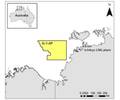dGB Earth Sciences launched its OpendTect 5.0, the latest version of its open source seismic interpretation software, at the Society of Exploration Geophysicists (SEG) 84th annual meeting in Denver.
OpendTect 5.0 comes with significant advances to dGB’s HorizonCube and sequence stratigraphic interpretation capabilities that will enable interpreters to gain an improved understanding of structural geologies. The launch also took place in conjunction with an OpendTect 5.0 master class conducted by dGB at SEG.
Key features of OpendTect 5.0 include a new interactive HorizonCube tracker workflow for 2D seismic. The new workflow can be used to track single horizons and creates 2D HorizonCubes through a dip-steered tracker in which the user picks horizons at multiple seed positions in both the structural and the Wheeler domains.
The correlated geologic time lines created through the HorizonCube and OpendTect 5.0 will provide interpreters with new ways of analyzing seismic data, thereby increasing interpreter understanding of their depositional history and improving the ability to find stratigraphic traps and build accurate geologic models.
“While the last few years have seen significant advances in seismic interpretation, the emergence of global seismic interpretation techniques such as HorizonCube will add unprecedented value to seismic data,” says Kristofer Tingdahl, dGB CEO.
Many of the new features within OpendTect 5.0 have emerged out of the dGB-led Sequence Stratigraphic Interpretation System (SSIS) consortium that includes sponsors such as Saudi Aramco, Statoil, OMV, MOL and Roc Oil. In addition to the new HorizonCube tracker workflow, other features within OpendTect 5.0 include:
Finally, OpendTect 5.0 will also include significant enhancements to the OpendTect commercial plugin, SynthRock. With SynthRock, interpreters combine forward modeling, rock physics and inversion to create and use forward models in qualitative and quantitative seismic interpretation studies. New SynthRock features within OpendTect 5.0 include the ability to generate synthetic gathers from input volumes of Density, and P- and S-wave velocities.



